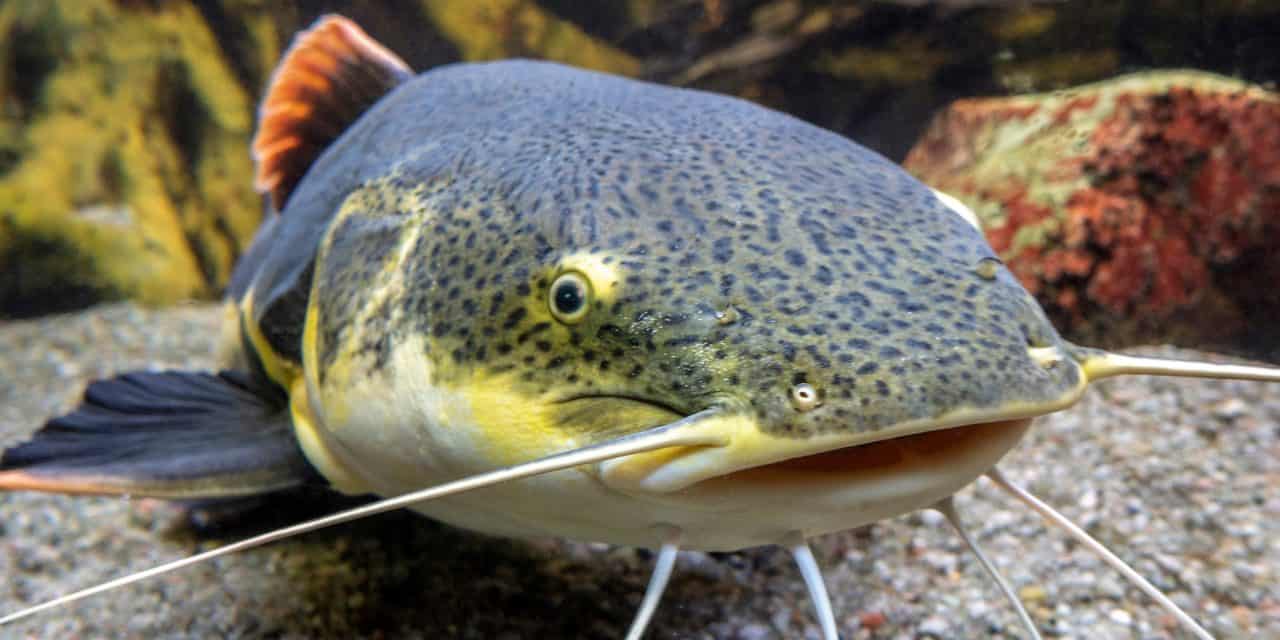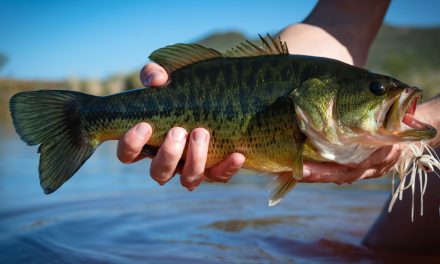Throughout the globe, there are an astonishing 40 different species of catfish. Furthermore, 30 of these species can be found within the United States. These catfish varieties are distinguishable for their barbels and are pursued for several reasons. From the thrill of a hefty dogfight to succulent meat on a dinner plate, catching a catfish is a favorite American halftime. Alas, if you want to catch and consume one of the barbel-faced fish for yourself, it’s important to know which species are what. More importantly, this is because not all catfish are edible or may present health risks. Here’s a shortlist of common catfish species found in the United States.
1. Flathead Catfish
In the United States, there are three main species of catfish that are plentiful and known as the “big three”. Flathead catfish are distinct for their slender heads that appear flattened. Nevertheless, flathead catfish have regularly been referred to by their nickname “shovelhead cats” for their strikingly similar appearance to a shovel. As such, they are found widely throughout Canada and the US. Notable locations are the Mississippi River, Ohio River, Missouri River, and Arkansas River.
To identify a flathead catfish, they should appear with brown or black mottled toned flesh. Its anal fin should look short or rounded without a forked tail. Alas, when it comes to size, flatheads can exceed 100 lbs, which is why they are a favorite among anglers for a dog fight and clean-tasting meal.
2. Channel Catfish

Image credit: 12019 via Pixabay
The second of the big three on this list is the coveted channel catfish. These bottom dwellers enjoy hiding in structures such as waterlog trucks, hollows, and muddy pockets. Channel catfish have an impeccable sense of smell and are drawn to any odorous baits. Anglers have found success in using anything from crabs, hot dogs, chicken livers, and cheese to attract them. Hence, they reside throughout Canada, the US, and Mexico. Common habitats include reservoirs, rivers, channels, marinas, and lakes.
To identify them, look for an off-white or light olive green color to their mucus-coated flesh. Observe the anal fin, which should appear curved, and the tail should be forked. Although possible, this species of catfish rarely grow over 30 lbs. Despite the fact they are smaller when compared to blue catfish and flathead catfish, channel catfish make for an excellent lean protein that is high in vitamin B12.
3. Blue Catfish
Finally, the last of the big three is the largest species of catfish found in the US; the blue catfish. This species can be found from New York to Belize. These catfish thrive in rivers, with the Mississippi being the most commonly observed dwelling for them. Some other big rivers include the Rio Grande, Missouri River, Arkansas River, Ohio River, and Des Moines River. Unlike channel catfish, which blue catfish are often mistaken for, these species are opportunistic feeders. They feed off crabs, shrimps, frogs, and whatever is available in their immediate habitat. Striped bass are a good indicator of whether blue catfish are present, as they will often feed on wounded fish.
Blue catfish can live over 20 years and can be over 100 lbs. Since this species can live a long time, it is best to eat smaller and younger fish of this variety. Older fish present the risk of having accumulated toxins in their bodies and should not be consumed. Moreover, blue catfish are distinguishable by their blue-gray-toned skin, straight anal fin, and forked tail.
4. White Bullhead
White bullhead and white catfish can be confused as two different species, but they are indeed the same. The proper name of this species is white bullhead, but the name white catfish can be interchangeable. When compared to the big three, this species of catfish is smaller, and weighs on average 10 lbs.
Moreover, white bullhead catfish can be found in the eastern US in rivers with muddy bottoms. But notable bodies of water include the Hudson River, Mississippi River, Delaware River, and the Ohio River and their watersheds. If you can come across one, it can be identified by its eight barbels, gray mucus-coated skin that transitions to a white underbelly, and slightly forked tail.
5. Yellow Bullhead

Image credit: Brian Forsyth via Pexels
Yellow bullhead catfish should be recognized by their yellow-olive appearance on their sides, with a black back. Its tail fin should appear rounded, with longer anal fins. Alas, this smaller variety of bullhead rarely exceeds two lbs and can live to be 12 years old. To target one, it is best to use a weighted bottom bouncing option, since this bullhead variety feeds by scavenging and will eat anything its barbels senses. However, it tends to be a nocturnal eater with a preference for aquatic bait like minnows, clams, crawfish, and even plants.
Yellow bullheads inhabit the central and eastern regions of the US. Thus, they are found in abundance in Texas, North Dakota, and the Great Lakes. More so, these catfish can be located in poorly oxygenated and polluted water that is heavy in mud and silt with minimal current.
6. Brown Bullhead
For more than 200 years, brown bullhead catfish have had a presence in the United States. Hence, this species of bullhead has been a symbol of the Obijwe People as a clan sign. However, they are considered an invasive species that arrived from Europe. Although similar to the yellow bullhead, the brown variation grows larger and appears as a dark green-brown with an off-white underbelly. The barbels around its mouth are yellow and brown, with a slightly forked tail. Brown bullheads are omnivorous scavengers and will eat anything from mollusks, algae, crawfish, and leeches. Like yellow bullheads, this variety is also a nocturnal feeder, and it is best to target them after dusk.
This species can be found throughout Canada and the United States and in gulf or bay areas. Notable examples of their habitat include Hudson Bay, the oceanic region from Nova Scotia to New Brunswick, the Mississippi River, and subsequent Delta and Gulf Coast.
Look At Those Whiskers
There you have it, six of the most widely sought and caught species of catfish found in the United States. Catfish are bountiful throughout the world, but in the United States, seven million anglers a year choose to target them for fun and a meal. Eating catfish can be a cost-effective lean protein that is high in omega-3 and vitamin B12. Aside from that, know that you know how to identify these various species, you distinguish what to what and what to release.






 E-Newsletter
E-Newsletter